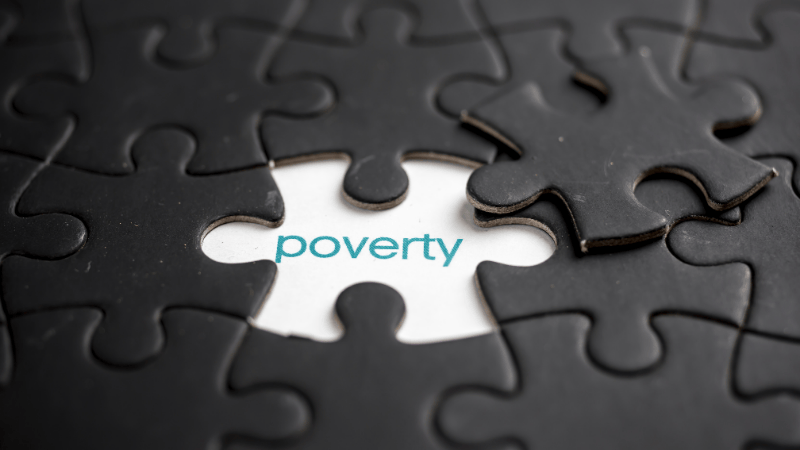Blog
At the Youth Endowment Fund, our goal is to prevent children and young people from becoming involved in violence.
That means understanding the pressures and circumstances that increase that risk — and poverty is one of the most significant.
To better understand the complex relationship between poverty and crime and violence, we funded a team from University College London (UCL) to conduct a systematic review of the existing research. Their findings provide important insights, while also highlighting how much we still need to learn.
Poverty and violence affecting young people: Association, not causation
First, it’s important to clarify that our review found evidence on the association between poverty and violence affecting children and young people, but couldn’t provide evidence on causation.
In research, causation means that one variable causes a change in another, demonstrating a ‘cause and effect’ relationship. In contrast, association indicates that two variables are related or often occur together, but it does not mean that one causes the other. In other words, the association between the two factors could be due to something else. The review was unable to provide evidence on causation because that would have required isolating the effects of poverty from its possible causes and consequences – not an easy task! Even where studies try to account for possible external influences, detangling the effects of poverty from its causes and consequences is challenging.
Nevertheless, the findings shed light on the complex associations between poverty and violence and helps us generate hypotheses about potential causal mechanisms that we could test using research designs that can examine causation.
Different types of poverty, different types of crime
Unsurprisingly, the review found that poverty does have an association with increased involvement in both crime and violence. But the relationship isn’t simple — and the findings show that different types of poverty are linked to different types of offending.
- Individual-level poverty, such as low household income, was more strongly associated with violent crime.
- Area-level poverty, such as living in a deprived neighbourhood, was more closely linked to non-violent crime.
This suggests that individual experiences and the wider environment shape the risks young people face in different ways. By examining these variations, we can better understand the nuanced ways in which poverty is associated with vulnerability to involvement in crime.
Additionally, perceptions of poverty — feeling worse off than peers — can also increase risk, particularly for engaging in behaviours such as bullying. This was the case even when the objective financial situation wasn’t as bad. The evidence behind this finding is much weaker than for other findings in the report, but it also suggests future research on subjective experiences of deprivation could also be worthwhile.
How gender and family structure shape risk
Finally, the review found that gender and family structure moderate the link between poverty and youth crime:
- Boys in deprived neighbourhoods were found to be more at risk than girls.
- Lower socioeconomic status posed a greater risk for single parent families than for two-parent families.
What’s next
To take these findings forward, we’re partnering with King’s College London, Impact on Urban Health and an evaluation consortium led by Anna Freud to test whether direct financial support can improve young people’s mental health and well-being, and reduce the chances they’ll become involved in violence. This trial will begin later in 2025. We have also recently funded research by Manchester Metropolitan University on the impact of the two-child benefit limit on children’s school and justice outcomes. There’s lots more in the full review report.
Related content
- Report
Report:Evidence Review on Poverty and Youth Crime and Violence
Understanding the relationship between poverty and crime and violence The link between poverty and children’s involvement in crime and violence is well established. But the details of this relationship are complex and not fully understood. To explore these complexities, the Youth Endowment Fund commissioned a systematic review by the Jill Dando Institute Research Laboratory at… - Report
Report:Poverty
What does our core indicator show? Overall, this measure shows a mixed picture. Over the past decade, absolute poverty has broadly been falling. However, the past two years have shown meaningful increases. In the latest year (2023/24), an estimated 3.85 million children were living in poverty in the United Kingdom, equivalent to 26% of all… - Statistics briefing
Report:Statistics update (April 2025): Trends in violence affecting children
This is an update to the statistics published in our Beyond the Headlines report. This update includes latest data on core indicators for knife crime, policing, health, children’s services and the youth sector in England and Wales. Core Indicators Dashboard For more details, see the full briefing or our core indicators dashboard.Children's Services Education Health Neighbourhoods Policing Youth Justice Youth Sector


